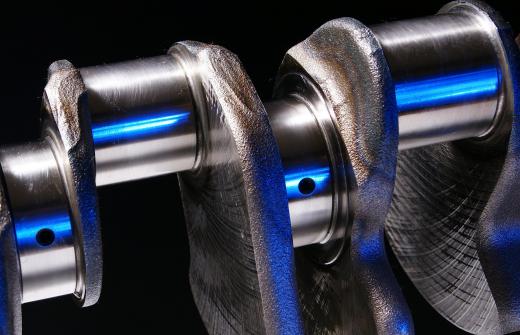A magnetic clutch is a device that allows for connection and disconnection between two coaxial shafts. In terms of operation, a magnetic clutch works much the same as a regular clutch, and both items serve roughly the same function in most machinery. An engine or motor drives a flywheel and a clutch plate, which is made out of material with a high coefficient of friction, is placed on top of it. The difference between magnetic clutches and standard models is in how the pressure plate controls the engagement and disengagement of the clutch plate with the flywheel. In normal clutches, a diaphragm spring is used to link up the clutch plate and flywheel, whereas in magnetic clutches, an electromagnetic field is used.
There are four main components to a magnetic clutch: a field, or coil; a rotor, which corresponds to the flywheel in a regular clutch; an armature, which corresponds to the clutch plate; and a hub, also known as the output. When a current is passed through the coil, an electromagnetic field is generated, the force of which must be strong enough to overcome the strength of the springs that separate the rotor and the armature. This electromagnetic field draws the armature into contact with the rotor, causing the armature to move. Connected to the armature is the hub, which is connected to the second shaft.

The functionality and performance of a magnetic clutch depend on a variety of factors, and in order to prevent the coil from overheating, a steady voltage is essential. Initial effects of friction between the armature and rotor are a problem that is addressed by burnishing the clutch plate to wear down the surface and make it as smooth as possible. To achieve faster response times, a technique known as over-excitation is implemented; this is where the coil briefly receives a voltage several times higher than the standard rating. For example, applying an initial voltage 15 times the normal coil voltage yields a response time that is three times faster than the standard response time.

A typical automobile uses regular clutches for the purpose of shifting gears and transferring torque from the engine to the crankshaft. Most cars that have air conditioning systems, however, will use a magnetic clutch to enable the air compressor to draw power from the engine when the air conditioning is turned on from the dashboard. The same type of technology is also extensively used in high-performance braking systems. Magnetic clutches are also used in numerous other pieces of machinery that are used on a daily basis, ranging from copy-machines to lawn mowers.
